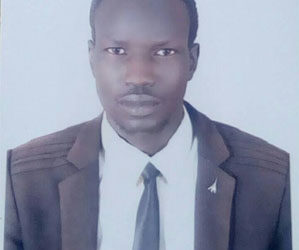By Philip Abiel
It was on July 13, 2023, when the National Council of Examinations of South Sudan announced the results of the National Secondary School Examinations for the academic year 2022-22023.
The announcement, this time around, was unusual because it was received with mixed reactions and shocks by members of the public, especially parents and schools, whose results got cancelled and were punished due to malpractices during examinations, placing many parents and three secondary schools in a dilemma and critical position on one side.
But on the other hand, many South Sudanese people and others were celebrating in support of the decision being made by the National Council of Examinations to cancel the results of the three secondary schools as a way of standardizing and strengthening the education system and institutions in South Sudan. Those secondary schools include Standard Secondary School in Wau, Juba High Secondary School in Bor, and Ganyliel Secondary School in Bentiu.
That decision has been long awaited since independence, as the rumours of malpractices in both primary and secondary schools leaving certificate examinations have been circulating over the country all along, and they didn’t begin until 2022–2023.
Now the question is, what should be done to strengthen the educational system and institutions in South Sudan?’ To answer the above-mentioned question, we are required to look back at history and learn from our neighbours’ good experiences.
South Sudan’s educational institutions and system were not established and set in 2011, but they have been there all along since the Turko-Egyptian occupation in 1821, the Anglo-Egyptian condominium in 1898, the independence of the old Sudan in 1956, and then the independence of South Sudan in 2011.
This is how far we go down the history of modern Sudan, when modern education was started formally and in an organised manner. So, you can see, we have a rich history that can teach us a lot of things that could make us strong enough in different aspects, for we lack nothing in this country.
The only thing that I can see lacking is patriotism from some of us, as South Sudanese who hold positions responsible for different sectors, not even education alone, because a patriotic person puts the interests of the nation first and before his or her own. Previously, the Sudan Secondary School Certificate was among the strongest certificates in the region and in the world, but it didn’t come out of the blue; it was through efforts exerted by different stakeholders in the Sudan.
Also, we have many countries in the region, such as Kenya, Ghana, Nigeria, South Africa, Zambia, etc., from which we can benefit in terms of their educational systems and others.
Now, how do we strengthen the educational system and institutions in South Sudan? although the problem is not educational institutions as such but the whole system in the Country, because if the system is not being well designed, set, regulated, implemented, monitored, evaluated and corrective measures are not being taken, then nothing good can come out of it, even if you can bring white people here in South Sudan to run that system.
But if we can just talk about it literally and presuppose that it is the education system and institutions that have a problem, then there are ten factors involved in such a situation, and without them being considered, nothing will work out, not even in the United States of America or the United Kingdom, let alone South Sudan, which is still struggling with tribalism, insecurity, hunger, and so forth. Those factors can be summarized as follows:
- Educational Policies and Regulations.
- School Syllabus and Curriculum.
- Infrastructure, utilities, and facilities
- Competent Administrators and Teachers.
- School Calendar.
- Involvement of Stakeholders.
- Educational Instructors and School Inspectors
- Prohibition of Interference.
- Education Budget; and
- Evaluation and Accountability
To understand more about the topic, let us now discuss those points one after another.
Educational policies and regulations. It is a pre-requisite for any institution or system in the whole world to function well that it has to have policies and regulations directing and governing the system and institutions.
Policies will function as the guidelines that direct those institutions towards the achievement of the goals being set for a certain period of time on what to do, how to do it, and when it should be done. All those questions are answered by policies being designed and set by higher and top bodies regulating lower-level institutions.
Regulations that will govern and discipline the behaviours, attitudes, and acts of individuals serving in those institutions should be there, including job descriptions, in order for them to observe and know where to start and when to end; to avoid conflict of interest, intimidation, overlapping of duties, domination, and misbehaviour on a daily basis.
But in the absence of strong and strict policies as well as a lack of implementation of those policies and regulations due to nepotism and tribalism or otherwise, the outcome would be messed up, weak institutions, and a weak educational standard in the country as a whole.
School syllabus and curriculum. The school curriculum is part and parcel of the whole educational standard in the country. The school curriculum should be strong, inclusive, and comprehensive and must contain elements that reflect the national characters and local contexts of the concerned country. International context can be introduced gradually in senior classes of primary schools, such as primary seven to primary eight, and then in secondary schools. When you look at the current curriculum in South Sudan, it lacks all the requirements mentioned above. It doesn’t contain the national characteristics of South Sudan, such as socio-economic and historical contexts, in a proper manner.
The curriculum itself is very shallow; it is neither inclusive nor comprehensive. Most of the contents are from East Africa, leaving our children to live the life of East Africa from a distance, not our own ethics and customs.
When you go through primary eight and secondary school books, they are very narrow and have low standards that cannot strengthen the whole educational system in the country. For instance, Social Studies, citizenship, and others are irrelevant subjects because what are they teaching our children? Our children are missing history and Geography due to this subject called Social Studies (SST).
While Citizenship is being misplaced in secondary school because it is irrelevant in secondary school, it is supposed to be taught at the University level so that University students will be able to understand it as it discusses issues to do with nationalism, civic education, patriotism, and the contributions of patriotic individuals in our society throughout our struggle for freedom. That subject is more political, which can confuse our children at an early stage before they reach the University level.
People of South Sudan and educationists, in particular, were not consulted when the current curriculum was developed after independence in 2011, but the natural fact is that when you want to design a curriculum, you should gather the voices of the citizens and consider the views of educationists or specialists and experts in the field of education to provide you with the technical and professional parts of the curriculum.
A curriculum is not just about topics written in book form; rather, it is about the contents that will be taught to children and their effect on them as well as the whole Country in the long run. Likewise, the educational ladder is an essential element of a good and strong system of education.
The educational ladder should not just be at three levels; it must be at least four levels. For instance, primary school should not be shortened to only two levels; it has to be composed of three levels, such as primary, intermediate, and secondary schools.
This is what will make the education system strong, like the way Sudan borrowed it from the British. Let us go back to that system, which is a good and fantastic system because it filters out weak elements among the students and pupils and leaves them behind to get more training.
Infrastructure, utilities, and facilities. Infrastructure is one of the essential components of an educational system in any modern setting, both in urban and rural areas of the country. Infrastructure, utilities, and facilities mean standard classes, offices, and toilets for teachers and male and female students separately.
There must also be a source of water and electricity for all who are involved in educational and learning processes to have clean drinking water, water for washing utensils, water for washing and usage of the toilets, water for irrigating school trees and followers, water for cooling the school environment system to reduce hydration, etc.
It is very important to have a source of electricity to provide schools with power for internal use that includes ventilation since our country falls within sub-Saharan Africa and the equatorial line, which makes it have a high level of heat mostly in the summer.
Therefore, it is important to have electricity for that purpose and other purposes such as light, cooking refreshments, usage of equipment, printing of examinations, and other school materials to avoid leakages of examinations that always happen due to the printing of examinations from the market. We also need facilities such as laboratories, particularly in secondary schools.
We want Biology, Chemistry, and Physics laboratories to be provided to our children in their secondary schools so they can learn practical aspects of their lessons, which will make them strong and help them compete with their counterparts at regional and international levels. We need playgrounds and nursery equipment for our children to play different types of sports, refresh their minds, and be creative and innovative.
Those infrastructures, utilities, and facilities support learning processes and assist school administration in controlling all the processes of learning and behaviours of pupils, students, and teachers at the schools.
Sometimes you find that some other schools have no fences, windows, or doors for their classrooms, which makes it very hard for administrators to control learners, teachers, and workers when all corners of the school are open, giving learners a good opportunity to come late or even come in during lunchtime.
Also, most of our schools have no water, bad and dirty toilets, limited classes and offices, and no laboratories, let alone electricity, which is a major problem for the country as a whole.
The availability of good infrastructure and facilities assists administrators and teachers in delivering services efficiently and effectively while motivating learners to enjoy learning, feel proud, and exert more effort to raise the standard of their schools.
That is why now many students want to be admitted to the University of Juba because the leadership of that institution continues to invest in infrastructure and facilities and upgrade the University to international standards to give a good impression and image and attract more learners to the university. to be continued
The writer can be reached via email at wundhol2015@gmail.com.



